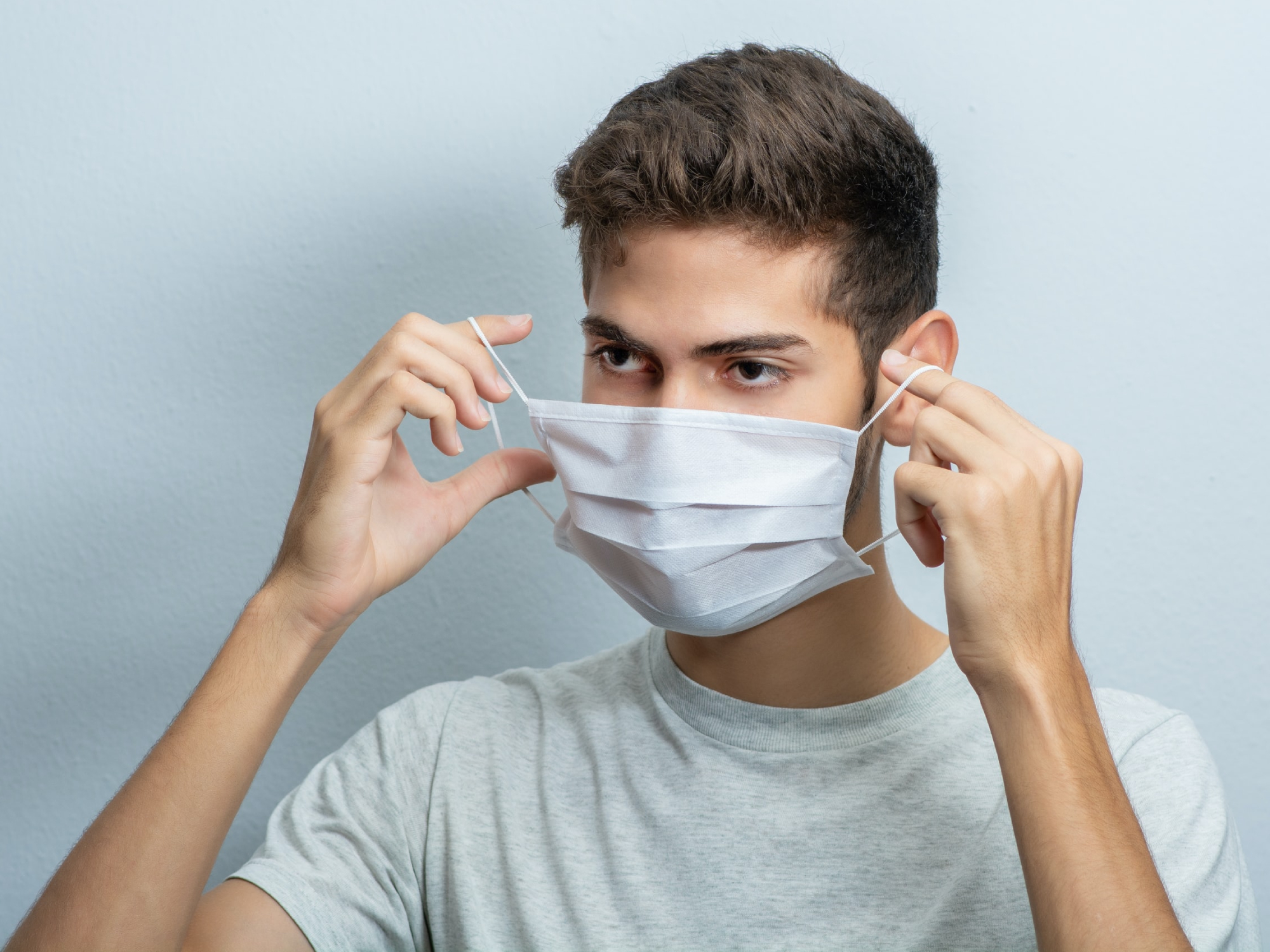

Click here to see all of PopSci’s COVID-19 coverage.
At this point in the pandemic, you’re probably wearing some kind of face mask while out and about. Depending on how long it’s been on your face, you may crave a “mask break” and be tempted to take it off. But removing your face covering without being careful could transfer germs and other unwanted particles to your mask. Here’s how to take your mask off in a way that prevents contamination and preserves its ability to protect you and your community.
Mask cleanliness equals mask effectiveness
Protecting yourself from germs starts with making sure you don’t accidentally get any on the inside of your mask. “Face masks are worn in close vicinity to the face, so any contaminants on a face mask are likely to be inhaled by the wearer,” says Sangwei Lu, professor of infectious diseases and vaccinology at the University of California, Berkeley. “It is important to keep face masks clean so people who wear them do not accidentally infect themselves with the germs on the face masks.”
Contaminants can even diminish the germ-blocking ability of certain mask materials, undermining the reason you’re wearing a mask in the first place. Masks that use electrostatic charges to filter particles, like N95s and polypropylene surgical masks, become less effective when too many particles accumulate and interfere with the charges, Lu says. Simply having somewhere safe and clean to store your mask when you’re not wearing it will prolong its effectiveness.
Cloth masks and paper surgical masks that rely only on physical filtration—not statically charged threads—can be affected by contamination as well, as small particles clog the pores in the fabric and reduce the mask’s breathability. “Wearers may have to breathe outside the masks, which defeats the purpose of the masks,” Lu says.
Before you take off your mask
Most importantly, check your surroundings. If you’re out in public, make sure you only remove your mask outdoors and away from other people. Only remove your mask indoors if you’re in your own home or in special circumstances, like eating in a restaurant that observes proper physical distancing between tables. However, the CDC notes that indoor dining is more risky than curbside or takeout.
[Related: Experts say COVID’s airborne transmission may deserve more attention]
Make sure your hands are clean. If you’ve just arrived home after a walk, a work shift, or running errands, wash your hands with soap and water before you touch your mask. If you’re out and about, whether in your car or an outdoor space, hand sanitizer will work.
Removing your mask
The most common way you may contaminate your mask is by touching the inside of your mask after touching the outside, Lu says. “As long as wearers are careful not to touch the outside of the masks and then touch the inside or their face, and replace or wash [their masks] regularly, it should be OK,” she says.
When you go to remove your face covering, avoid touching the middle section of the material and only grasp it by the ear loops. Remove both loops from around your ears at the same time and fold the mask in half so the inner part is protected within the fold.
Don’t pull the mask down over your chin or leave it hanging by only one of the ear loops—this may expose the inside of your mask to contaminants that will end up right next to your nose and mouth when you put the mask on again.
Storing your mask
After removing your mask, proper storage is the final step for preserving your personal protective equipment until it’s time to put it on again. A clean, dry location is the best place to store your mask between uses, Lu says. “Storing in a warm place is better than storing in a cold place because SARS-CoV-2 survives longer at cold temperatures,” she explains. Make sure your mask stays folded so the inside doesn’t touch any other surface.
When you’re out and about, a clean plastic bag or small paper lunch sack can work well for short-term storage. Place your properly folded mask inside the bag and slip the bag into a pocket while you take a quick mask break. Be careful not to touch the inside of the mask when you’re ready to put it back on. Handling it only by the ear loops, as you did when you took it off, should do the trick.
[Related: Three easy ways to clean your reusable masks]
If you’ve just returned home and won’t need your mask again until tomorrow or later, consider throwing out your disposable mask or washing your cloth mask, especially if you spent time in public spaces where you may have been exposed to COVID-19.
“Disposable masks should be replaced and cloth masks should be washed as frequently as possible, especially after using them in places such as crowded supermarkets, restaurants, or gatherings,” Lu says. “Replacing or washing after a single use is the best.”
